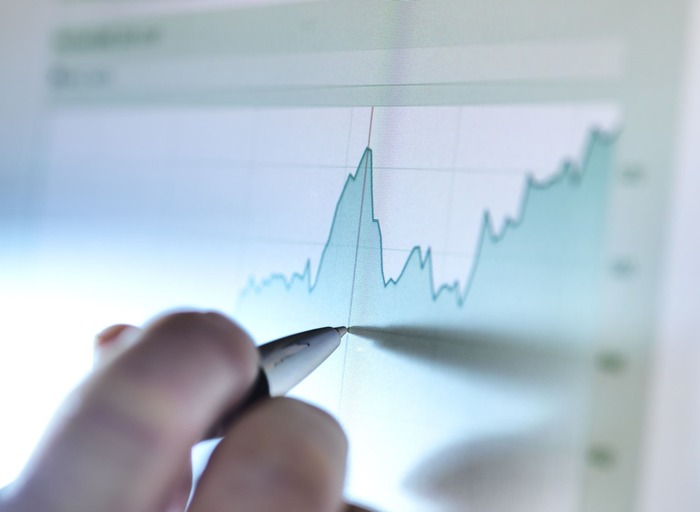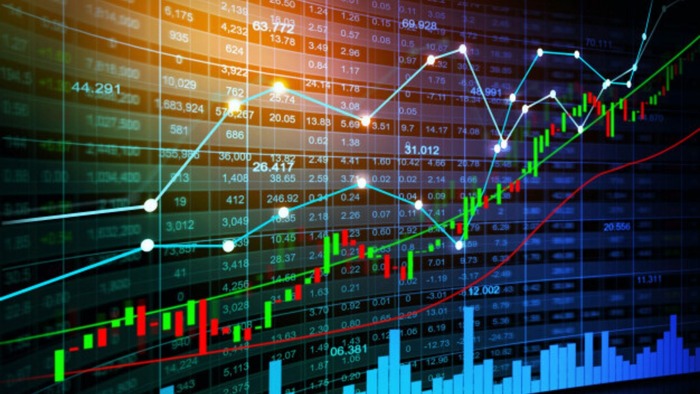The myriad of technical indicators available can overwhelm traders looking to build algorithmic strategies. Familiarizing yourself with the most popular indicators simplifies the selection process. You can either choose a pre-built bot using these key indicators or create your own custom bot incorporating your preferred indicators.
Understanding the leading options guides your decisions on whether to use an off-the-shelf algo bot or build one tailored to your technical analysis approach. By focusing on the proven, widely-used indicators as a starting point, you can more easily determine the optimal indicators to include in your algorithmic trading strategy.
This article provides an overview of algorithmic trading indicators – what they are, which are most respected for accuracy, and how trading bots utilize them in automated strategies. We will define key types of indicators used in algo trading, highlight the most trusted options, and explain their implementation within algorithmic systems.
What Are Algo Trading Indicators?
Algorithmic trading strategies rely on mathematical indicators to analyze markets and make automated buy/sell decisions.
These algo trading indicators process historical price data, trading volume, and other market information to forecast future movements and spot potential trades. Some of the most widely used types of indicators in algorithmic trading include:
- Moving Averages (MA): Indicate the average price over a specific period and are used to identify trends.
- Relative Strength Index (RSI): Measures the speed and change of price movements to identify overbought or oversold conditions.
- Moving Average Convergence Divergence (MACD): Shows the relationship between two moving averages of a security’s price and is used to spot changes in strength, direction, momentum, and duration of a trend.
- Bollinger Bands: Consists of a middle band being an N-period simple moving average (SMA) along with upper and lower bands that are standard deviations away from the middle band; useful for understanding the volatility and relative price levels.
- Volume Weighted Average Price (VWAP): Gives an average price a security has traded at throughout the day, based on both volume and price. It is important because it provides traders with insight into both the trend and value of a security.
- Fibonacci Retracements: Use horizontal lines to indicate areas of support or resistance at the key Fibonacci levels before the price continues in the original direction.
- Stochastic Oscillator: A momentum indicator comparing a particular closing price of a security to a range of its prices over a certain period of time.
- Standard Deviation: Measures the market’s volatility by comparing current price movements to historical price movements.
- Average Directional Index (ADX): Measures the strength of a trend.
- Parabolic SAR (Stop and Reverse): Aids in understanding the direction of price movement and potential reversals.
What Are the Best Technical Indicators for Cryptocurrency?
The most effective technical indicators for cryptocurrencies depend on a trader’s goals, market landscapes, and target digital assets. While tools like Moving Averages, RSI, and Bollinger Bands provide a starting point, no single indicator universally applies.
Crypto’s high volatility and distinct dynamics warrant testing traditional indicators for fit. Rigorously backtest strategies across historical data before applying them to live trades. This determines efficacy relative to specific assets and environments.
Ideally, blend several indicators with other signals like volume, chart patterns, and breaking news. This compounds visibility into momentum shifts, trader psychology, and price actions. Just ensure the collective toolkit aligns with your risk appetite, targets, and timeframe.
Ultimately cryptocurrency technical analysis involves ongoing customization. The ideal indicators today may prove less useful tomorrow as assets and objectives evolve. Sustain an iterative, evidence-based approach to remain nimble amidst such fast-changing landscapes.
Which Technical Indicator Is the Most Accurate?
Again, there’s no universally accurate technical indicator for all markets and conditions. An indicator’s effectiveness depends on factors like timeframe, asset class, and trading style.
However, some top technical indicators traders often rely on for relative accuracy include the ones already mentioned above. For the sake of clarity, here they are:
- Moving Averages (MA/SMA/EMA) to identify trends from crossover points
- Relative Strength Index (RSI) to gauge momentum and overbought/oversold levels
- Moving Average Convergence Divergence (MACD) to analyze trend strength and direction
- Bollinger Bands to assess volatility and potential support/resistance
- Fibonacci Retracements to identify possible reversal levels
- Volume indicators like OBV to confirm price trends
The key is understanding that indicators work best in combinations rather than isolation. For example, combining RSI with MACD can confirm momentum. Or using moving averages with Bollinger Bands can confirm a trend’s range.
Indicators that work in trending markets may falter in ranging or volatile conditions. Success requires choosing appropriate indicators for current market conditions and trading strategies. Robust backtesting and paper trading are essential before committing to real capital.
Which Crypto Bot Trading Strategies Employ Algo Trading Indicators?
Cryptobot trading strategies that employ algorithmic trading indicators typically use a combination of different signals to make buy or sell decisions. Here are several strategies that are commonly automated through crypto trading bots:
Trend Following:
- Bots use indicators like Moving Averages (MA), Moving Average Convergence Divergence (MACD), or Parabolic SAR to identify and follow trends.
- A simple example would be buying when the price moves above a moving average and selling when it moves below.
Mean Reversion:
- Strategies assume that the price will revert to the mean (average) over time.
- Indicators like the Relative Strength Index (RSI) or Bollinger Bands might signal when an asset has deviated significantly from its historical mean and is likely to revert back.
Momentum Trading:
- Momentum strategies use indicators like the RSI, Stochastic Oscillator, and MACD to identify when a cryptocurrency is gaining momentum, which might indicate a good time to buy or sell.
Arbitrage:
- Bots exploit price differences across exchanges. No traditional indicator is used here; the algorithm focuses on the price disparities and executes trades to profit from them.
Market Making:
- Bots place buy and sell limit orders near the current market price and profit from the spread. While this may not rely on typical indicators, some bots may use VWAP to ensure they are trading at a good average price.
Scalping:
- Scalping bots attempt to perform a large number of small trades to profit from small price gaps, often utilizing high-frequency trading (HFT) techniques. They may use volume, volatility, and short-term RSI levels to make decisions.
Swing Trading:
- Swing trading bots try to capture gains in a crypto asset within a span of one day to several weeks. They may use a mix of indicators like EMA crossovers, MACD, ADX, and Fibonacci Retracement levels to identify entry and exit points.
Breakout Trading:
- These bots look for instances when the price breaks out of a defined range or through a trendline. Volume indicators alongside moving averages can be used to confirm the strength of the breakout.
Ichimoku Cloud Trading:
- Some bots utilize the Ichimoku Cloud, which provides information on support/resistance, trend direction, momentum, and buy/sell signals—all in one view.
AI and Machine Learning:
- More sophisticated bots use machine learning algorithms to adapt their trading strategies, by analyzing large amounts of data and identifying complex patterns. They might not use traditional indicators in the way human traders do.
It’s key to remember that all trading strategies, including those using bots, come with risk. Bots should be monitored and regularly adjusted to suit changing market conditions, and it’s important to thoroughly backtest any strategy before employing real capital. Furthermore, no strategy guarantees success, and traders should only risk what they can afford to lose.
When selecting an automated crypto trading bot, prioritize key criteria beyond using top technical indicators. Ensure robust security provisions are in place without previous breaches. Scrutinize credibility, profitability track records, and customization flexibility.
For instance, Bitsgap connects 15+ exchanges under one platform and offers a variety of bots like the Dogecoin bot or Binance bot which, in turn, follow a host of strategies from dollar-cost averaging to futures grid trades.
Traders can combine indicators like RSI or MACD to trigger buys, sells, or strategy shifts. The company has maintained robust security standards since launching in 2017.
Compared to rigid single-exchange bots, Bitsgap boasts unified multi-exchange visibility and interoperability. Traders can tailor automated strategies while leveraging smart order routing to execute via the ideal exchange pair and price.
Conclusion
In summary, algorithmic trading indicators are the analytical engines powering automated trading strategies. By processing current and historical data, indicators identify opportunities and trigger buy/sell decisions.
Traders can choose from a vast array of indicators — while no single option is perfect, respected choices like moving averages, RSI, MACD, and Bollinger Bands are widely used.
The key is selecting indicators that align with your trading style and market conditions. Algo bots incorporate combinations of indicators to make trades based on mathematical data rather than emotion.
By understanding how bots employ key indicators, traders can better evaluate available algorithms or build custom bots incorporating their preferred indicators.
With practice, testing, and the right indicators powering your algorithms, bots can execute trades quickly and precisely. The automated nature of these strategies gives traders an edge in fast-moving markets. So leverage the data-crunching capabilities of indicators to uncover objective insights and elevate your trading.


